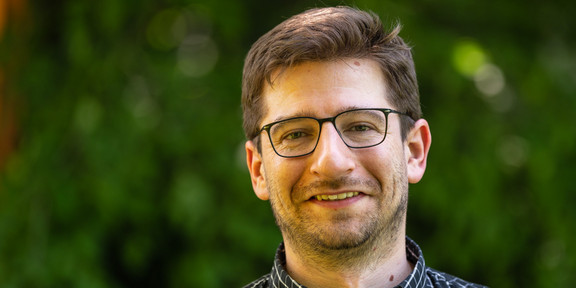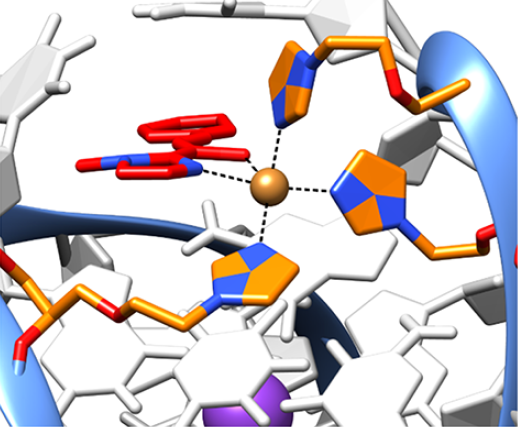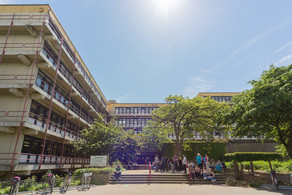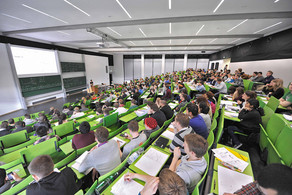TU Dortmund Young Academy fördert Dr. Yury Kutin
- Neues aus der Fakultät 2023

Projektbeschreibung
DNA double helix is the most common state of DNA, immediately recognized by everyone. There are, however, a number of more complex, non-canonical DNA structures that form both in vitro and in vivo. G-quadruplexes (GQs) are four-stranded DNA helices that self-assemble from guanine-rich sequences and show a great variety of three-dimensional structures. They play a role in many biological processes and are promising targets in anti-cancer research.

Over the last two decades, the field of catalytic nucleic acids has been developing as an alternative to protein enzymes. Specifically, DNA GQ systems containing metal ions were recently utilized for chiral catalysis. This demonstrated that metal-modified GQs have a strong potential for the asymmetric synthesis, which is crucial, e.g., for the pharmaceuticals production. However, a common issue of these systems is the lack of control or sometimes even knowledge of the exact location of the metal ion and its immediate surroundings.
Our collaboration partners, the group of Prof. Clever, solved this issue by introducing into GQs several pyridine or imidazole ligands. The pre-formed ligand environment binds transition metal ions from solution, such as paramagnetic Cu(II)2. In this project, we plan to characterize substrate-binding to the catalytic Cu(II) site of the modified GQs with atomic-scale resolution using electron paramagnetic resonance (EPR) techniques. Specifically, we will tackle the mechanism of GQ/Cu(II)-catalyzed Michael addition reactions by incorporating 19F tags into the substrate (see the Figure). Information on the precise position and orientation of the substrate bound to Cu(II) will be obtained using 19F electron-nuclear double resonance (ENDOR) and will enable a deeper structural understanding and, thus, possible manipulation of the enantioselective catalysis.
References
1. Punt, P. M.; Langenberg, M. D.; Altan, O.; Clever, G. H. Modular Design of G-Quadruplex MetalloDNAzymes for Catalytic C–C Bond Formations with Switchable Enantioselectivity. J. Am. Chem. Soc. 2021, 143, 3555-3561.
2. Stratmann, L. M.; Kutin, Y.; Kasanmascheff, M.; Clever, G. H. Precise Distance Measurements in DNA G-Quadruplex Dimers and Sandwich Complexes by Pulsed Dipolar EPR Spectroscopy. Angewandte Chemie International Edition 2021, 60, 4939-4947.
Informationen zum Förderprogramm:
TU Dortmund Young Academy - Graduiertenzentrum





